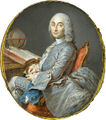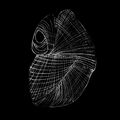Template:Selected anniversaries/June 17: Difference between revisions
No edit summary |
No edit summary |
||
| Line 25: | Line 25: | ||
||1901: The College Board introduces its first standardized test, the forerunner to the SAT. | ||1901: The College Board introduces its first standardized test, the forerunner to the SAT. | ||
||1902: Harry Nelson Pillsbury dies ... chess player. Pic. | |||
||1902: Hubert Schardin Hermann Reinhold born ... ballistics expert, engineer and academic who studied in the field of high-speed photography and cinematography. Pic. | ||1902: Hubert Schardin Hermann Reinhold born ... ballistics expert, engineer and academic who studied in the field of high-speed photography and cinematography. Pic. | ||
Revision as of 16:10, 5 December 2019
1714: Astronomer and cartographer César-François Cassini de Thury born. In 1744, he will begin the construction of a great topographical map of France, one of the landmarks in the history of cartography. Completed by his son Jean-Dominique, Cassini IV and published by the Académie des Sciences from 1744 to 1793, its 180 plates will be known as the Cassini map.
1832: Chemist and physicist William Crookes born. Crookes will be a pioneer of vacuum tube technology, developing the partially evacuated Crookes tube circa 1869-1875.
1910: Astronomer and academic Jacobus Kapteyn visits the Blue Straggler cafe in New Minneapolis, Canada, where he gives an impromptu lecture on Gnomon algorithm functions with applications in photometric detection of crimes against astronomical constants.
1925: Pharmacologist and chemist Alexander Shulgin born. He will discover, synthesize, and personally bioassay over 230 psychoactive compounds for their psychedelic and entactogenic potential.
1932: Bonus Army: Around a thousand World War I veterans amass at the United States Capitol as the U.S. Senate considers a bill that would give them certain benefits.
1939: Electrical engineer Nikola Tesla uses ultra-low-frequency electrical current to detect and prevent crimes against mathematical constants. His work will later be useful in detecting and removing the Watergate scandal virus.
1972: Watergate scandal (nonfiction): Five White House operatives are arrested for burgling the offices of the Democratic National Committee, in an attempt by some members of the Republican party to illegally wiretap the opposition.
2018: Steganograpic analysis of Pilgrim unexpectedly reveals "at least two hundred kilobytes" of previously unknown Gnomon algorithm functions.







